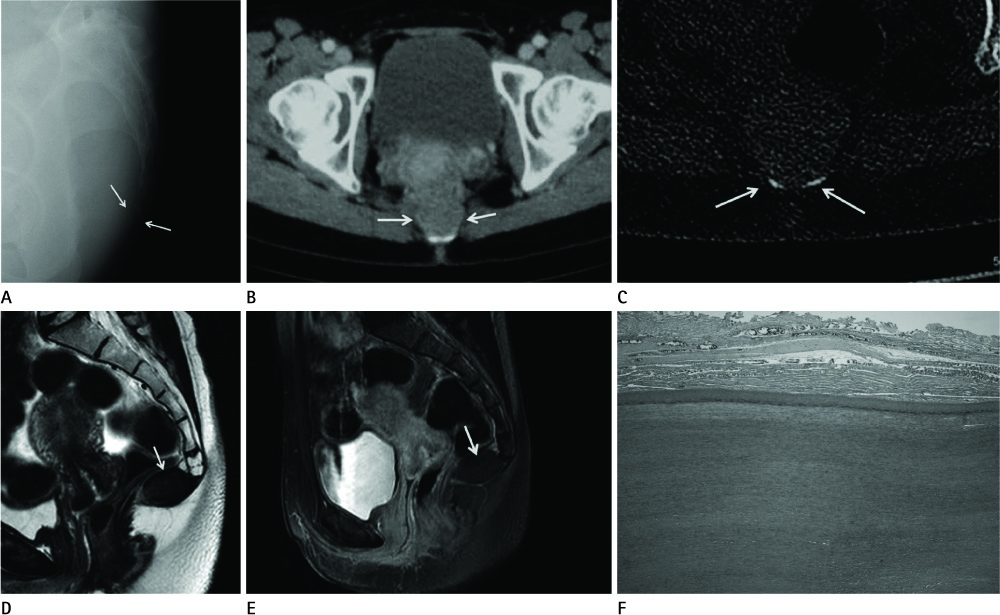J Korean Soc Radiol.
2011 Nov;65(5):519-523.
Pericoccygeal Epidermoid Cyst: Report of Two Cases
- Affiliations
-
- 1Department of Radiology, Daejeon St. Mary's Hospital, The Catholic University of Korea College of Medicine, Daejeon, Korea. yslee1074@medimail.co.kr
- 2Department of Pathology, Daejeon St. Mary's Hospital, The Catholic University of Korea College of Medicine, Daejeon, Korea.
Abstract
- Pericoccygeal epidermoid cyst is a rare benign congenital lesion lined with keratinized squamous epithelium. We report the magnetic resonance imaging findings of an epidermoid cyst at the precoccygeal tip as a cause of coccygodynia in a 32-year-old woman and a retrococcygeal epidermoid cyst in a 27-year-old man. We also describe the pericoccygeal lesions and coccygodynia.
MeSH Terms
Figure
Reference
-
1. Chin SC, Chen CY, Zimmerman RA. Pericoccygeal hidrocystoma. AJNR Am J Neuroradiol. 1998; 19:587–588.2. Chen ML, Su JM, Cheng YM, Chou CY, Kuo PL. Presacral epidermoid cyst with right hydronephrosis. Taiwan J Obstet Gynecol. 2006; 45:155–158.3. Yang DM, Yoon MH, Kim HS, Kim HS, Chung HS, Chung JW, et al. CT and MR findings of presacral epidermoid cyst: a case report. J Korean Radiol Soc. 1999; 41:545–547.4. Kocaoglu M, Frush DP. Pediatric presacral masses. Radiographics. 2006; 26:833–857.5. Harrist TJ, Gang DL, Kleinman GM, Mihm MC Jr, Hendren WH. Unusual sacrococcygeal embryologic malformations with cutaneous manifestations. Arch Dermatol. 1982; 118:643–648.6. Yang DM, Yoon MH, Kim HS, Oh YH, Ha SY, Oh JH, et al. Presacral epidermoid cyst: imaging findings with histopathologic correlation. Abdom Imaging. 2001; 26:79–82.7. Jaiswal A, Shetty AP, Rajasekaran S. Precoccygeal epidermal inclusion cyst presenting as coccygodynia. Singapore Med J. 2008; 49:e212–e214.8. Nathan ST, Fisher BE, Roberts CS. Coccydynia: a review of pathoanatomy, aetiology, treatment and outcome. J Bone Joint Surg Br. 2010; 92:1622–1627.9. Patijn J, Janssen M, Hayek S, Mekhail N, Van Zundert J, van Kleef M. 14. Coccygodynia. Pain Pract. 2010; 10:554–559.10. Ueda K, Tsunoda A, Nakamura A, Kobayashi H, Shimizu Y, Kusano M, et al. Presacral epidermoid cyst: report of a case. Surg Today. 1998; 28:665–668.



